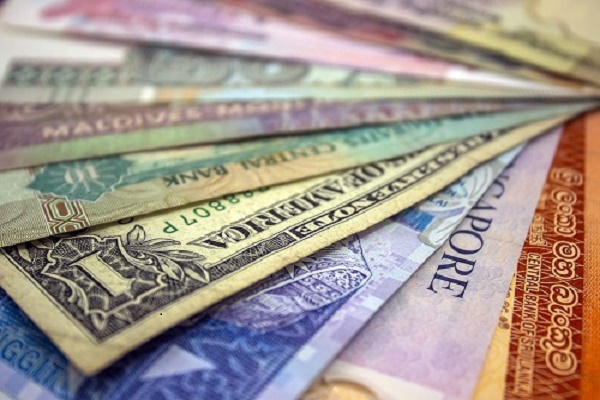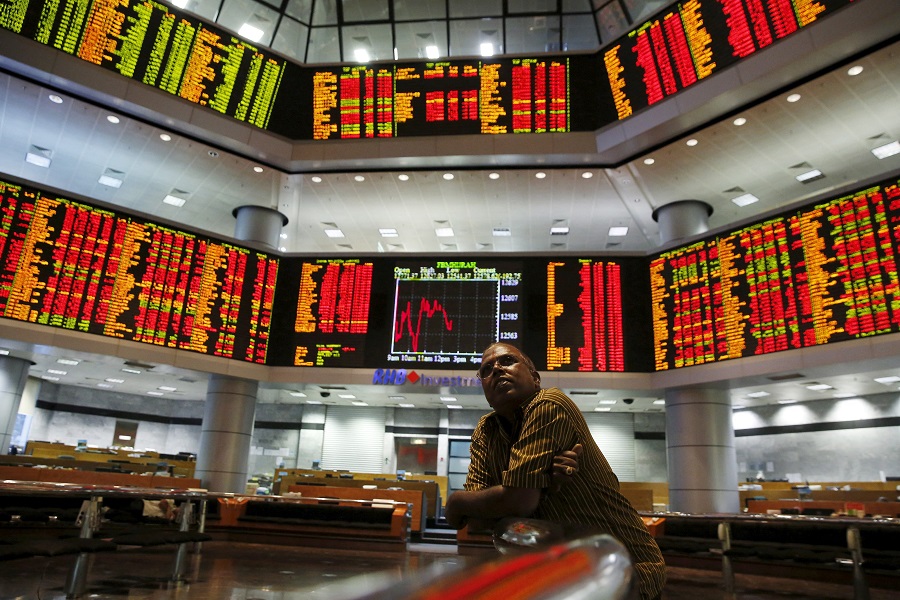Silver trading range for the day is 83605-86465 - Kedia Advisory

Gold
Gold's ascent, marking a notable 1.52% increase to settle at 72727, mirrors the market's reaction to weak U.S. employment figures, stoking anticipation of Federal Reserve interest rate cuts. With new claims for unemployment benefits surpassing expectations, traders are heavily pricing in a 69% likelihood of a rate cut by September, as per CME's FedWatch Tool. The uncertainty surrounding U.S. inflation, as highlighted by San Francisco Federal Reserve President Mary Daly, further bolsters this sentiment. Despite this, physical gold demand during a significant festival in India was unexpectedly subdued due to near-record high prices. Retail buyers were deterred, leading dealers to offer substantial discounts. Similarly, in China, premiums surged to $26-$35 per ounce over benchmark spot prices, indicative of the delicate balance between price levels and consumer demand. While demand slightly improved post the Golden Week holiday in Japan, the overall market sentiment remained cautious. Looking forward, investor focus shifts to forthcoming U.S. producer price index and consumer price index data, crucial for gauging the Fed's rate trajectory. From a technical standpoint, the gold market is undergoing short covering, evidenced by a 2.72% drop in open interest alongside a significant price surge of 1088 rupees. Key support levels for gold are identified at 72010, with potential downside testing to 71290 levels. Conversely, resistance is anticipated at 73170, with a breakthrough potentially leading to further price testing at 73610.
Trading Ideas:
* Gold trading range for the day is 71290-73610.
* Gold gains as weak U.S. employment figures fuelled bets of interest rates cuts by Fed.
* The number of Americans filing new claims for unemployment benefits increased more than expected last week.
* Demand for physical gold was much lower than usual during a key festival in India, as near-record high prices deterred retail buyers.
Silver
Silver prices exhibited a modest 0.49% uptick, settling at 84910, driven by improving investment demand and optimistic prospects for increased actual demand, particularly in China. The latest economic data from the US, particularly the surge in initial jobless claims to over 8-month highs, signals a weakening labor market, providing ample room for the Federal Reserve to adopt a softer monetary stance. Atlanta Federal Reserve President Raphael Bostic's remarks underscore the likelihood of interest rate cuts this year, despite uncertainties regarding timing and extent, especially with inflation remaining sluggish. In the Eurozone, inflation projections align with expectations of a rate cut by the European Central Bank (ECB), with policymakers eyeing a reduction from record highs in June. Although interest rates were left unchanged last month, indications point to an impending cut, most likely on June 6, contingent upon wage and inflation data trajectories. Technically, the silver market is experiencing short covering, evidenced by a 0.55% drop in open interest alongside a substantial price increase of 411 rupees. Key support levels for silver are identified at 84260, with a potential downside testing to 83605 levels. On the upside, resistance is anticipated at 85690, with a breakthrough possibly leading to further price testing at 86465. This technical analysis suggests a short-term bullish sentiment driven by short covering activities.
Trading Ideas:
* Silver trading range for the day is 83605-86465.
* Silver rose amid improving investment demand and hopes of increasing actual demand in China.
* Silver was driven by increased safe haven demand amid stalemate in Middle East ceasefire talks.
* Latest economic data from the US advocated for the softer monetary stance by the Fed.
Crude oil
Crude oil prices experienced a slight downturn, decreasing by -0.83% to settle at 6551, amidst lingering uncertainty regarding the outlook for oil demand, attributed to signs of weakening economic growth. Despite this, there were positive signals from China, the world's top crude importer, as crude oil imports increased in April, suggesting a potential uptick in demand. However, the overall picture of global oil demand growth has been revised downward by the U.S. Energy Information Administration (EIA), with projections now indicating a more balanced market. The EIA's updated forecasts anticipate faster-than-expected output growth from regions outside the Organization of Petroleum Exporting Countries (OPEC), coupled with lower demand expectations from developed economies, reflecting a nuanced understanding of the complex dynamics influencing oil markets. Amidst these developments, geopolitical tensions persist, exemplified by Israel's intention to proceed with plans to invade Rafah and other parts of Gaza, following stalled peace negotiations in Egypt. Such geopolitical uncertainties can introduce volatility into oil markets, as they have the potential to disrupt supply chains and impact regional stability. Looking ahead, the OPEC+ production policy remains a key focal point, with significant uncertainty prevailing ahead of the group's policy meeting on June 1. Decisions made during this meeting could have profound implications for global oil supply dynamics and market sentiment. From a technical standpoint, the crude oil market is characterized by fresh selling pressure, indicated by a 1.27% increase in open interest alongside a decline in prices by -55 rupees. Key support levels for crude oil are identified at 6501, with a potential downside testing to 6452 levels. Conversely, resistance is anticipated at 6644, with a breakthrough possibly leading to further price testing at 6738.
Trading Ideas:
* Crudeoil trading range for the day is 6452-6738.
* Crude oil dropped amid some uncertainty about the outlook for oil demand.
* Crude oil imports in China increased in April, signaling improving demand
* EIA cuts world oil demand forecast for 2024, hikes output expectations
Natural gas
Natural gas prices experienced a decline of -0.89%, settling at 189.4, driven by forecasts indicating milder weather conditions over the next two weeks and concerns regarding the significant oversupply of gas in storage. Despite US utilities adding 79 billion cubic feet (bcf) of gas into storage, below market expectations, output has decreased, reaching a preliminary 16-week low of 95.5 bcfd over the past six days. However, gas flows to LNG export plants are anticipated to increase, reaching a 16-week peak of 1.7 bcfd, highlighting the complex dynamics influencing supply and demand in the natural gas market. The Natural Gas Supply Association (NGSA) forecasts record levels of natural gas demand this summer driven by power market consumption and exports. However, prices are expected to decline compared to last year due to increased production and higher storage levels. Despite a projected 1% increase in customer demand compared to last summer, downward pressure on prices is anticipated, reflecting the robust supply-side dynamics. According to the Energy Information Administration (EIA), natural gas production in the US lower 48 states rose by 2.7% in February compared to January, marking a 3.8% increase from a year ago. However, production in the US Gulf of Mexico decreased by 0.7% from January levels. These production dynamics underscore the importance of regional variations in influencing overall supply levels. From a technical standpoint, the natural gas market is witnessing long liquidation, as indicated by a significant drop of -11.98% in open interest alongside a decline in prices by -1.7 rupees. Key support levels for natural gas are identified at 187, with a potential downside testing to 184.7 levels. Conversely, resistance is anticipated at 193.5, with a breakthrough possibly leading to further price testing at 197.7.
Trading Ideas:
* Naturalgas trading range for the day is 184.7-197.7.
* Natural gas slid on forecasts for milder weather over the next two weeks.
* Output has declined by approximately 2.3 billion cubic feet per day over the past six days.
* Gas flows to LNG export plant in Freeport is anticipated to reach a 16-week peak of 1.7 bcfd
Copper
Copper prices surged by 1.15%, settling at 869.75, as markets continued to assess supply deficits against robust near and long-term demand indicators. The shift in China's Politburo rhetoric, signaling deeper concerns about the country's property crisis, sparked speculation of rate cuts and quantitative easing, further bolstering market sentiment. Production data from Chile, the world's largest copper producer, presented a mixed picture, with output declining at Codelco but increasing at mines like Escondida and Collahuasi. However, setbacks in key mines have led to pessimism regarding copper ore availability, potentially resulting in a 10% output cut by Chinese smelters, which contribute over half of the global supply. Inventory data also provided insights into market dynamics, with copper inventories in domestic bonded zones witnessing a slight decrease, reflecting concentrated deliveries post the Labour Day holiday. However, inventories in the Shanghai bonded zone declined while those in the Guangdong bonded zone grew, underscoring regional variations in supply and demand dynamics. From a technical perspective, the copper market experienced short covering, evidenced by a 3.92% drop in open interest alongside a price increase of 9.9 rupees. Key support levels for copper are identified at 861.7, with a potential downside testing to 853.4 levels. Conversely, resistance is anticipated at 878.5, with a breakthrough possibly leading to further price testing at 887. This technical analysis suggests a bullish sentiment prevailing in the market, supported by increased buying activity.
Trading Ideas:
* Copper trading range for the day is 853.4-887.
* Copper surged as markets continued to gauge the extent of supply deficits.
* Copper production from Codelco, slid 10.1% from a year earlier to total 107,300 metric tons in March
* Copper inventories in the domestic bonded zones decreased 1,200 mt from April 30 to 81,200 mt.
Zinc
Zinc prices surged by 0.97%, settling at 261.3, driven by positive trade data from China, the world's leading consumer and producer of the metal. China's increased imports and exports in April signaled a resurgence in both domestic and foreign demand, instilling confidence in the market. Furthermore, Swedish mining giant Boliden's decision to resume production at its Tara zinc mine, Europe's largest, added to the upbeat sentiment. The mine's revival, scheduled for the fourth quarter of this year with full capacity expected by January 2025, underscores the anticipation of increased supply to meet growing demand. The improved global economic outlook, coupled with soft labor data from the US raising expectations of Fed interest rate cuts in September, provided further support to zinc prices. Additionally, the resumption of zinc production at Nyrstar's Budel smelting operations in the Netherlands, driven by higher metal prices used in steel galvanization, contributed to the positive momentum in the market. However, data from the International Lead and Zinc Study Group (ILZSG) revealed a widening global zinc surplus to 40,100 metric tons in February from 12,300 tons in January. Despite this surplus, the first two months of the year still registered a surplus of 53,000 tons, compared to a deficit of 8,000 tons in the same period last year, highlighting the evolving supply-demand dynamics in the zinc market. From a technical standpoint, zinc market is witnessing fresh buying, with a 3.92% increase in open interest alongside a price increase of 2.5 rupees. Key support levels for zinc are identified at 259.1, with potential downside testing to 256.9 levels. Conversely, resistance is anticipated at 263.1, with a breakthrough possibly leading to further price testing at 264.9.
Trading Ideas:
* Zinc trading range for the day is 256.9-264.9.
* Zinc gains buoyed by positive trade data from China.
* The improved global economic outlook fueled momentum after soft labor data from the US
* The decision by Swedish mining giant Boliden to resume production at its Tara zinc mine
Aluminium
Aluminium prices experienced a decline of -1.45%, settling at 230.85, driven primarily by a significant increase in total aluminium stocks in London Metal Exchange-registered warehouses. The accumulation of aluminium stocks reached their highest level since January 2022, surging by 88% to 903,850 metric tons, according to daily LME data. This increase was attributed to rent share deals, where traders temporarily take Russian-made aluminium from warehouses to profit from rule changes. Furthermore, the re-warranting of sanctioned Russian aluminium for rent deals in approved warehouses contributed to the surge in aluminium LME stocks. Despite this surge, the fundamentals of the aluminium market remained largely unchanged, with commodity giants expected to re-warrant their metals. However, new sanctions limiting the sale of aluminium to US and UK customers could potentially impact market supply. Meanwhile, concerns over bauxite security in China persisted due to the country's dependency on Guinea, which experienced disruptions following an explosion in a key fuel depository. Additionally, production curbs in Yunnan, China's fourth-largest aluminium-producing region, continued due to the annual dry season, adding to supply concerns. From a technical perspective, the aluminium market witnessed fresh selling pressure, with a 6.28% increase in open interest alongside a decline in prices by -3.4 rupees. Key support levels for aluminium are identified at 228.8, with potential downside testing to 226.8 levels. Conversely, resistance is anticipated at 234.6, with a breakthrough possibly leading to further price testing at 238.4.
Trading Ideas:
* Aluminium trading range for the day is 226.8-238.4.
* Aluminum dropped after LME data came in to show an 88% jump in inventory.
* Aluminium LME stocks rose by 424,000 metric tons to 903,850 tons, the highest since January 2022.
* Smelters in Yunnan, remained subject to production curbs due to the annual dry season.
Cotton candy
Cotton candy prices experienced a marginal decline of -0.1%, settling at 57360, primarily attributed to sluggish milling demand amidst muted yarn demand in the global market. Pressure on prices was further compounded by prospects of a better crop in countries such as Australia. However, the downside was limited as demand for Indian cotton remained robust from countries like Bangladesh and Vietnam, among others. The International Cotton Advisory Committee (ICAC) has projected increases in the cotton-producing area, production, consumption, and trade for the next season, 2024-25. Notably, cotton stocks in India are expected to fall by nearly 31% in 2023/24, reaching their lowest level in more than three decades due to lower production and rising consumption. This reduction in stockpiles will limit exports from India, the world's second-biggest producer, and support global prices. For the marketing year 2024/25, India's cotton production is estimated to decrease by two percent, with farmers expected to shift acreage to higher return crops. However, mill consumption is anticipated to increase by two percent as yarn and textile demand improve in major international markets. Additionally, with the recent recension of import duty on extra-long staple (ELS) cotton, imports are projected to increase by 20 percent. Technically, the cotton candy market witnessed long liquidation, with a drop of -0.79% in open interest alongside a decline in prices by -60 rupees. Key support levels for cotton candy are identified at 57060, with potential downside testing to 56750 levels. Conversely, resistance is anticipated at 57640, with a breakthrough possibly leading to further price testing at 57910.
Trading Ideas:
* Cottoncandy trading range for the day is 56750-57910.
* Cotton dropped as sluggish milling demand is still concerns amid muted demand of yarn in global market.
* Pressure also seen amid prospects of a better crop in countries such as Australia.
* Cotton stocks at the end of 2023/24 marketing year could fall to 2 million bales - CAI
* In , a major spot market, the price ended at Rupees dropped by percent.
Turmeric
Turmeric prices experienced a marginal decline of -0.17%, settling at 18698, primarily due to profit booking and an increase in supplies at the end of the harvesting season. However, the downside was limited as farmers held back stocks in anticipation of further price increases. The current heat wave across India threatens to damage crop yields, exacerbating the supply crunch and supporting prices. The India Meteorological Department predicts more heat wave days than usual in May, further intensifying concerns about crop damage. Despite the decrease in production estimated for 2023-24, turmeric exports dropped by 4.42% during Apr-Feb 2024 compared to the previous year, while imports decreased by 15.36% during the same period. However, there was a notable rise in turmeric exports and imports in February 2024 compared to January 2024, indicating some fluctuation in trade dynamics. Turmeric-growing regions such as Sangli, Basmat, and Hingoli are experiencing good demand for quality turmeric, driven by expectations of increased sowing area in the current year. However, demand destruction has occurred as prices surged, leading to a hand-to-mouth approach by many consumers. From a technical standpoint, the turmeric market witnessed long liquidation, with a -2.58% drop in open interest alongside a decline in prices by -32 rupees. Key support levels for turmeric are identified at 18176, with potential downside testing to 17652 levels. Conversely, resistance is anticipated at 19048, with a breakthrough possibly leading to further price testing at 19396. This technical analysis suggests a bearish sentiment prevailing in the market, supported by increased selling activity.
Trading Ideas:
* Turmeric trading range for the day is 17652-19396.
* Turmeric prices dropped amid profit booking and as increase in supplies at the end of harvesting season.
* However, downside seen limited as farmers are holding back stocks in anticipation of a further rise.
* The Ministry of Agriculture first advance estimate for turmeric production in 2023-24 is estimated at 10.74 lakh tonnes
* In , a major spot market, the price ended at Rupees dropped by percent.
Jeera
Jeera prices surged by 4.15% to settle at 26235, driven by a slowdown in arrivals as both stockists and farmers hesitated to release their stocks amidst favorable price realizations. The arrival pace increased slightly in the first week of May compared to the prior week, indicating a cautious approach by market participants. Export demand is expected to rise further, supported by tightening global supplies and robust buying activity by stockists. Indian jeera remains preferred by global buyers, contributing to the upward movement in prices. The production scenario presents an interesting dynamic, with a significant increase in sowing area and favorable weather conditions leading to a substantial rise in cumin production in major producing regions like Gujarat and Rajasthan. The estimated production in Gujarat alone is a new record, indicating a two-fold increase compared to the previous year. This surge in production contrasts with the decline observed in cumin exports during Apr-Feb 2024, which dropped by 23.75% compared to the previous year. However, February 2024 saw a marginal increase in exports compared to January 2024, although still lower than the same period last year. From a technical perspective, the jeera market witnessed fresh buying activity, with a notable increase in open interest by 12.46% alongside a significant price uptick of 1045 rupees. Key support levels for jeera are identified at 25330, with potential downside testing to 24430 levels. On the upside, resistance is anticipated at 26800, with a breakthrough possibly leading to further price testing at 27370.
Trading Ideas:
* Jeera trading range for the day is 24430-27370.
* Jeera prices gained as arrival pace has started to slow down.
* Global buyers preferred Indian jeera with tightening global supplies.
* New arrivals have started in Gujarat since last 20-25 days and new arrivals have started in Rajasthan also since last 15 days.
* In Jodhpur, a major spot market, the price ended at 26500 Rupees dropped by 0 percent.
Views express by all participants are for information & academic purpose only. Kindly read disclaimer before referring below views.




















